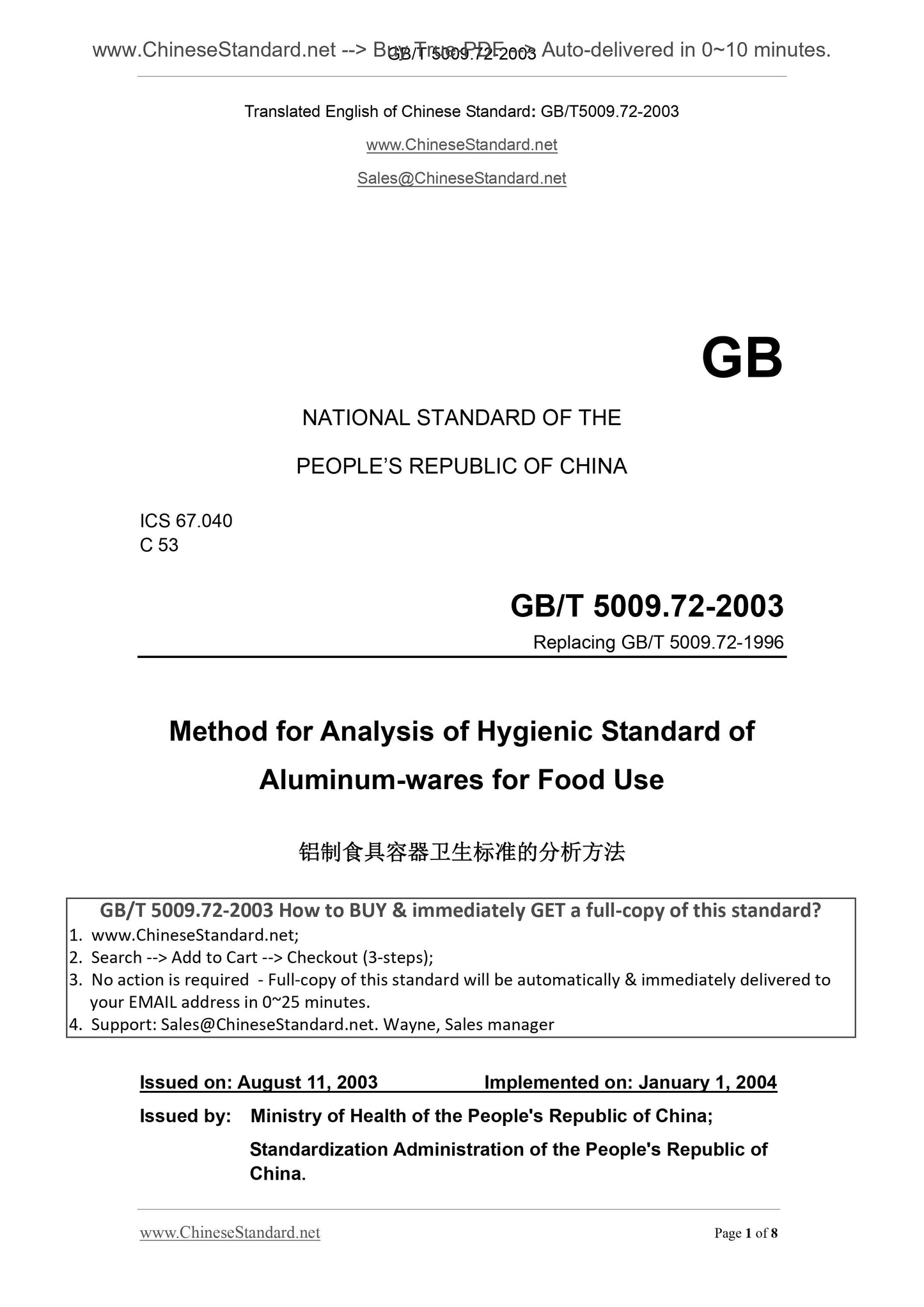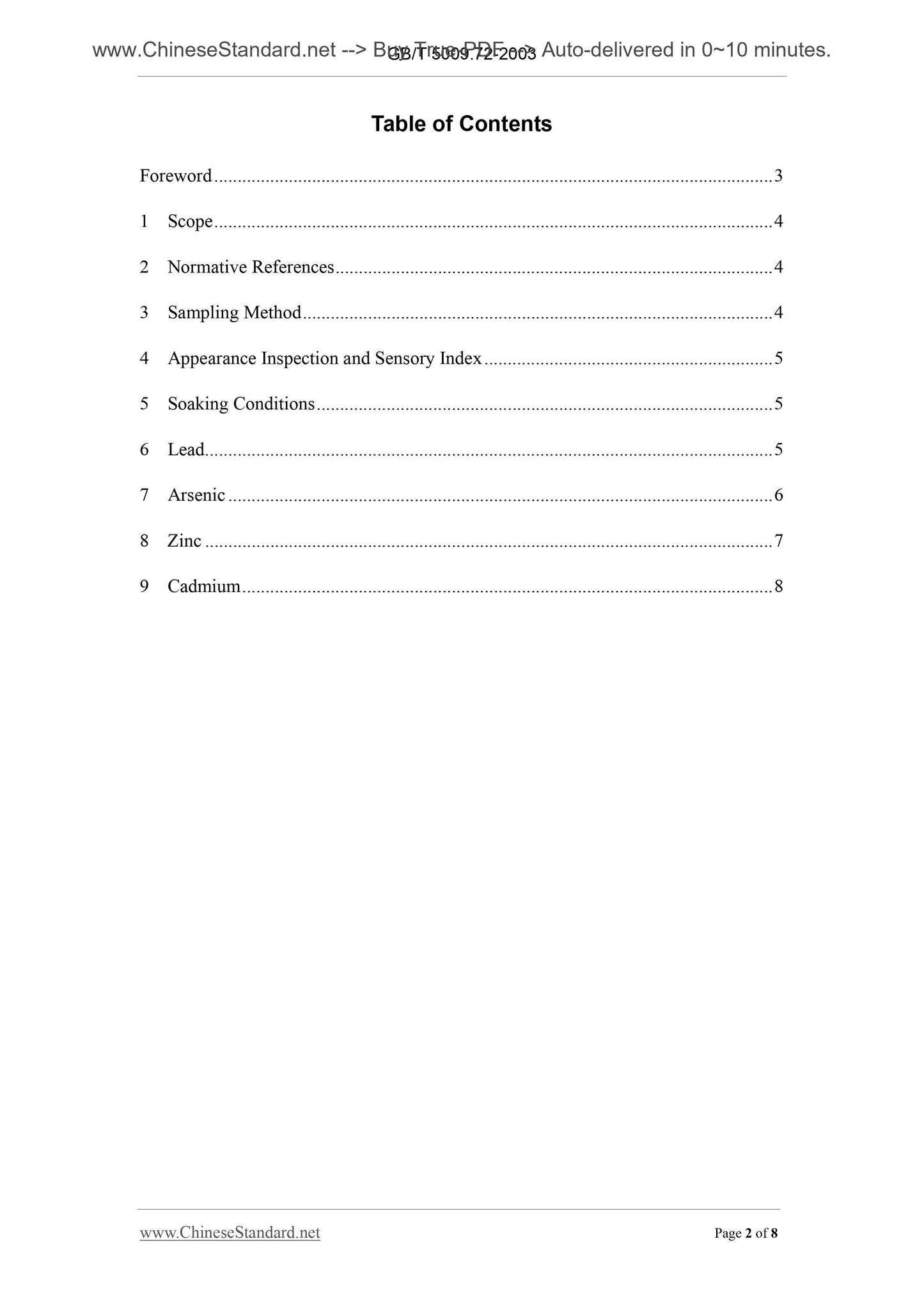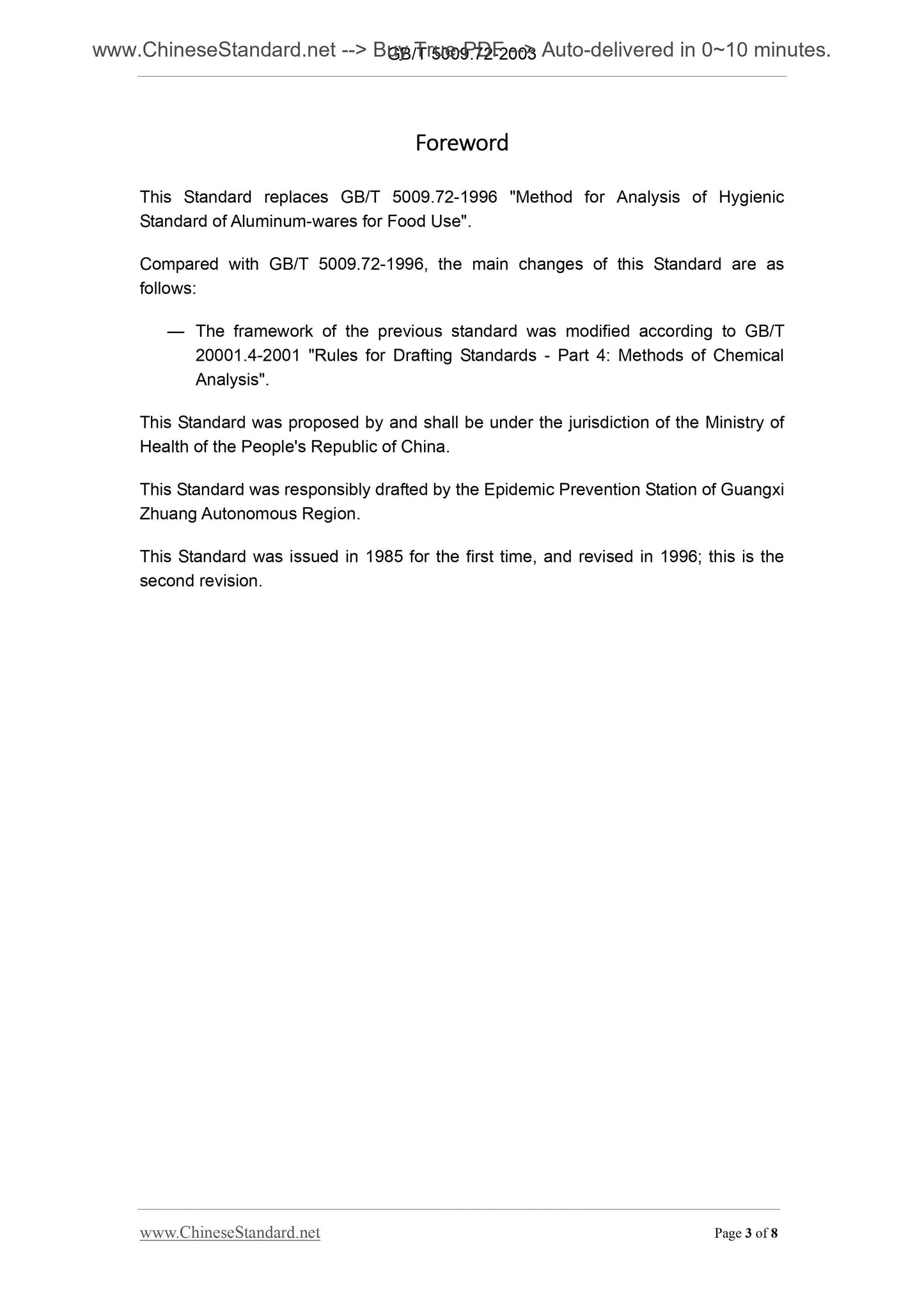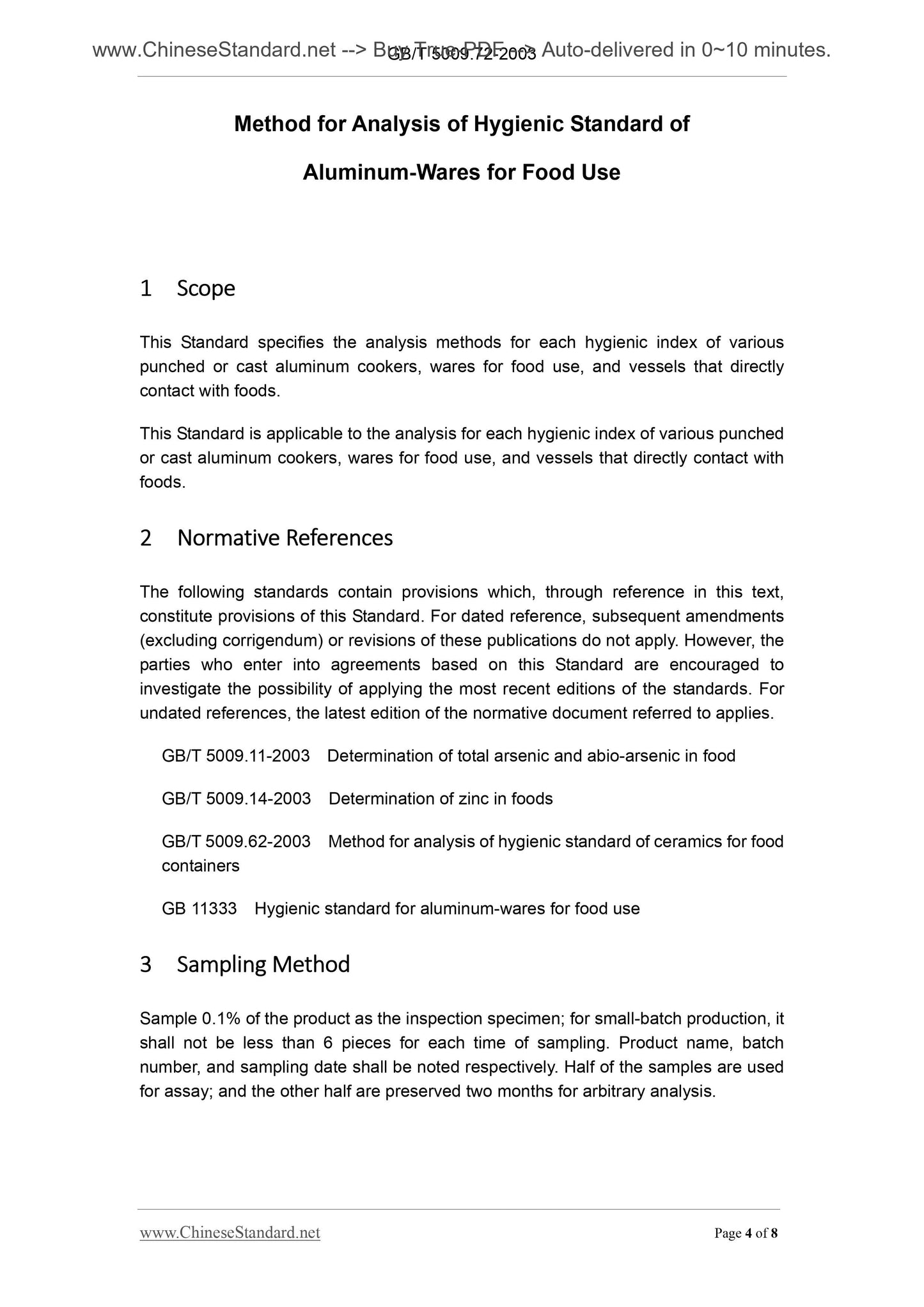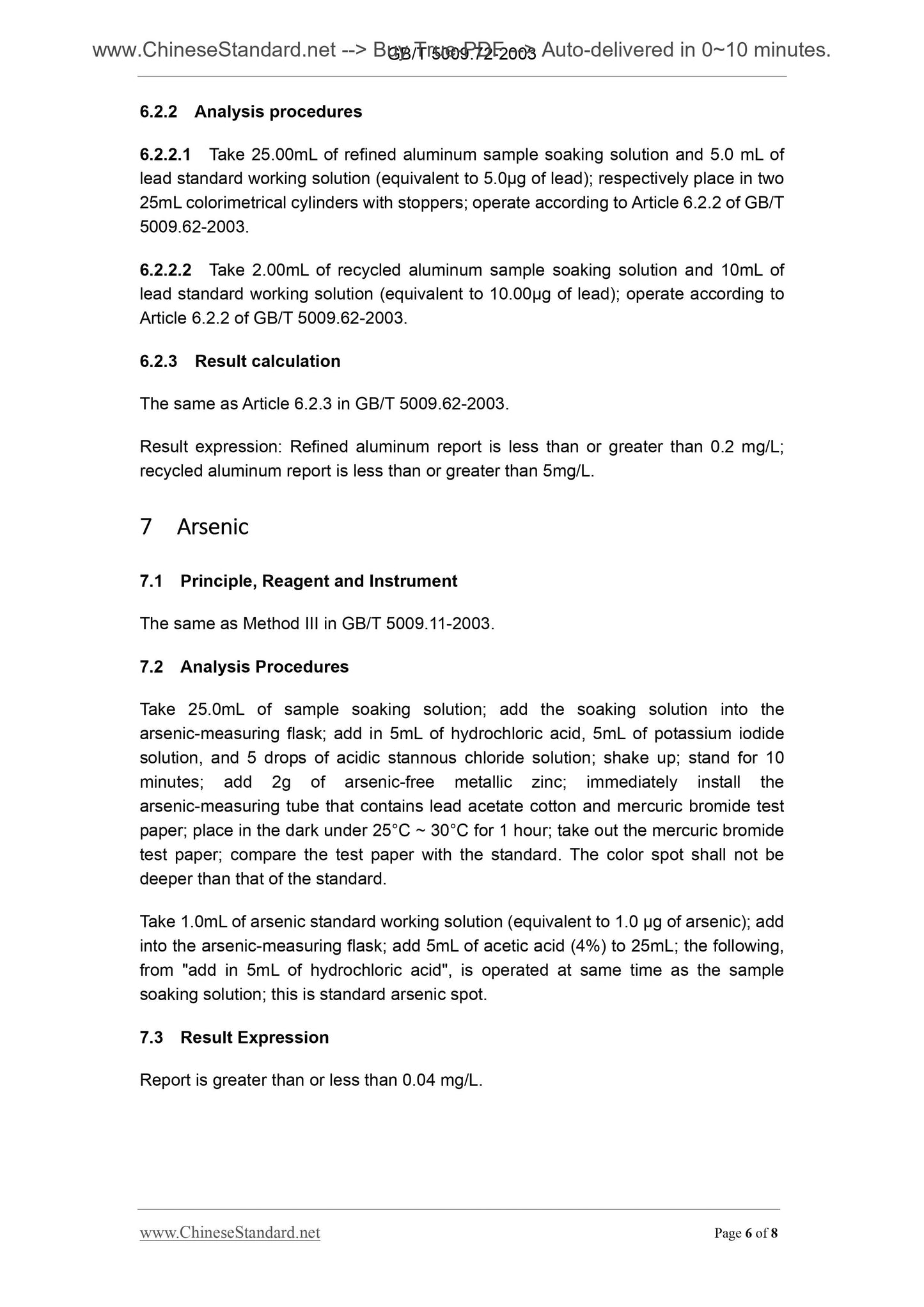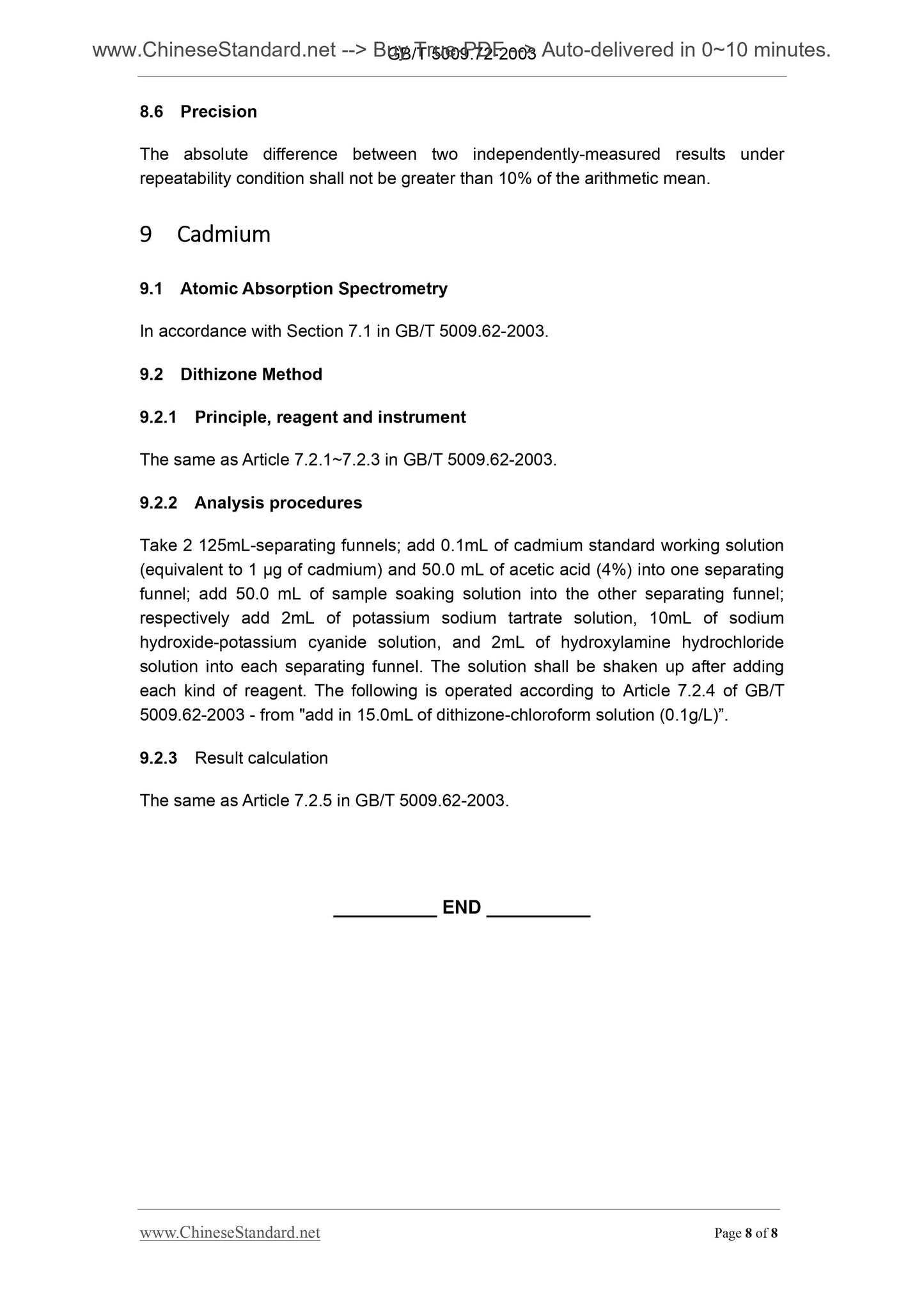1
/
of
6
www.ChineseStandard.us -- Field Test Asia Pte. Ltd.
GB/T 5009.72-2003 English PDF (GB/T5009.72-2003)
GB/T 5009.72-2003 English PDF (GB/T5009.72-2003)
Regular price
$70.00
Regular price
Sale price
$70.00
Unit price
/
per
Shipping calculated at checkout.
Couldn't load pickup availability
GB/T 5009.72-2003: Method for analysis of hygienic standard of aluminum-wares for food use
Delivery: 9 seconds. Download (and Email) true-PDF + Invoice.Get Quotation: Click GB/T 5009.72-2003 (Self-service in 1-minute)
Newer / historical versions: GB/T 5009.72-2003
Preview True-PDF
Scope
This Standard specifies the analysis methods for each hygienic index of variouspunched or cast aluminum cookers, wares for food use, and vessels that directly
contact with foods.
This Standard is applicable to the analysis for each hygienic index of various punched
or cast aluminum cookers, wares for food use, and vessels that directly contact with
foods.
Basic Data
| Standard ID | GB/T 5009.72-2003 (GB/T5009.72-2003) |
| Description (Translated English) | Method for analysis of hygienic standard of aluminum-wares for food use |
| Sector / Industry | National Standard (Recommended) |
| Classification of Chinese Standard | C53 |
| Classification of International Standard | 67.040 |
| Word Count Estimation | 5,567 |
| Date of Issue | 2003-08-11 |
| Date of Implementation | 2004-01-01 |
| Older Standard (superseded by this standard) | GB/T 5009.72-1996 |
| Quoted Standard | GB/T 5009.11-2003; GB/T 5009.14-2003; GB/T 5009.62-2003; GB 11333 |
| Issuing agency(ies) | The People Republic of China Ministry of Health, China National Standardization Management Committee |
| Summary | This standard specifies: direct contact with food aluminum as raw materials by stamping or casting molding with a variety of drinks, utensils and containers of various health indicators analytical methods, This standard applies to: direct contact with food with aluminum as raw material stamping or casting molding with a variety of drinks, utensils and containers of various health indicators analysis. |
Share
